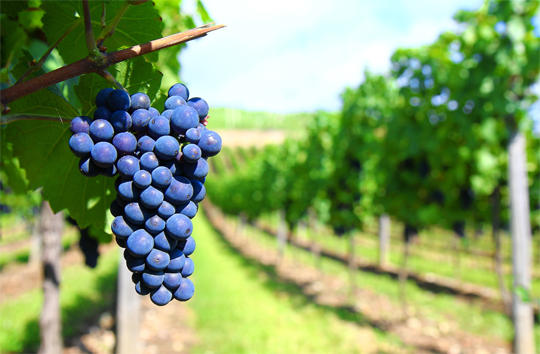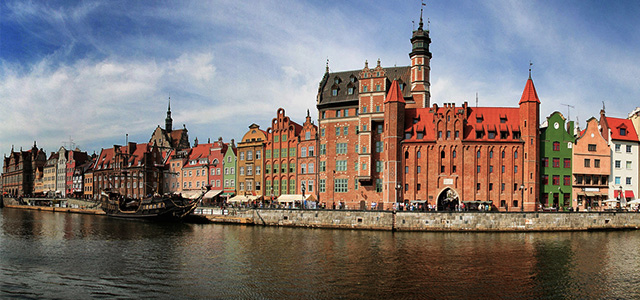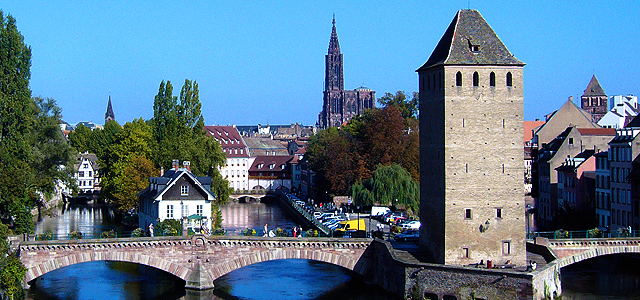
Alsace: Of medieval towns and idyllic vineyards
It’s like walking onto a set of a period medieval movie. With rustic medieval towns and villages, Alsace brings to life the intriguing Middle Ages of discovery, history and culture. Tucked in north-eastern France near Switzerland and Germany, the region is wrapped with rolling mountains, scattered with inviting vineyards and offers a medieval cityscape with a dash of old world charm.
Alsatian Vineyard Route
A major draw of Alsace is its vineyards, offering wines of astonishing diversity. Take the Alsatian Vineyard route and you’ll be swept into a whirlwind of wine-tasting splendor. With over 30 vineyard trails to join, it’s a dizzying journey of discovery on grape variety, various stage of vine growth, work involved in processing the wine and of course, the actual wine tasting.
The complete Alsatian Vineyard Route brings you to 67 towns and villages, broken down into four regions, working its route from the South to the North, covering Thann-Colmar, Colmar-Ribeauville (Rappoltsweilen), Ribeauville-Obernai, Obernai-Wissembourg.
It’s common for visitors to tour just one region, which takes up to a day, but you can explore as much of the route as you want, depending on how much you wish to see. Typically, you can go through a wine village in half an hour, although bigger villages and cities might take a longer time.
Tip: the Alsatian Vineyard route covers a rural area, giving you the chance to soak in the arresting sights while pleasing your palate with its variety of wines. However, this also means limited public transport. Renting a car and driving yourself is recommended. Road signs are helpful in guiding you along the route with a handy map. Avoid driving from dusk onwards- the small roads are not lit.
You can check out the Alsatian Vineyard Route website for its complete route.
Nature at its finest
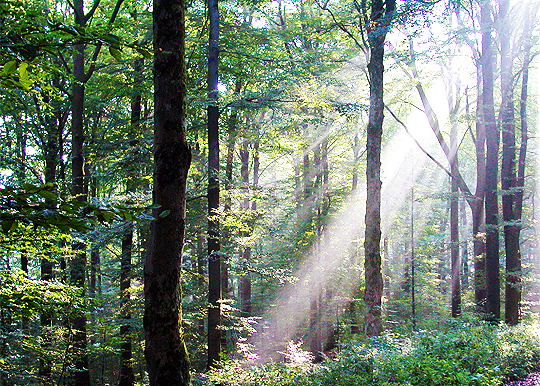
Alsace’s extreme climatic differences give way to an unsullied natural environment of lush jungles and forests, expansive plains and serene parks to send nature lovers hearts palpitating.
Just 20 minutes from the capital of Alsace- Strasbourg, the Ernstein forest with meandering glittering rivers and unspoiled forests makes a refreshing visit. The area also spots a cycling track and footpaths for visitors to soak in the natural sights.
Nearer the south of Alsace is Petite Camargue, the region’s oldest nature reserve. Filled with over 40 species of trees, 180 species of birds, over 40 types of dragonflies among dozens of flowers, it’s the perfect spot for nature enthusiast to visit with its biological diversity.
Tip: if you’re a fan of birds, mid-August to October are the best seasons to visit, you can catch migratory birds as they rest their wings for a spell here before continuing their journey.


Alsace also has two regional nature parks brimming with flora and fauna. Visit the Ballons de Vosges Regional Nature Park, and climb to its peak for a stunning panoramic view of the plain of Alsace and the Black forest. You can even spot the Swiss Alps and Mont Blanc. This natural heritage at Haut-Rhin of Alsace is a collection of 113 villages, and shelters a diverse wildlife and flora. Its landscape teems with lakes, forests and waterfalls. Hiking trails around the area allow you to explore its fortified castles and museums and get acquainted with the local folk art and traditions.
Over at the Northern Vosges Regional Natural Park, visit a protected area of woodland, wetland and farmland amongst historical sites.
Strasbourg: bringing back the old
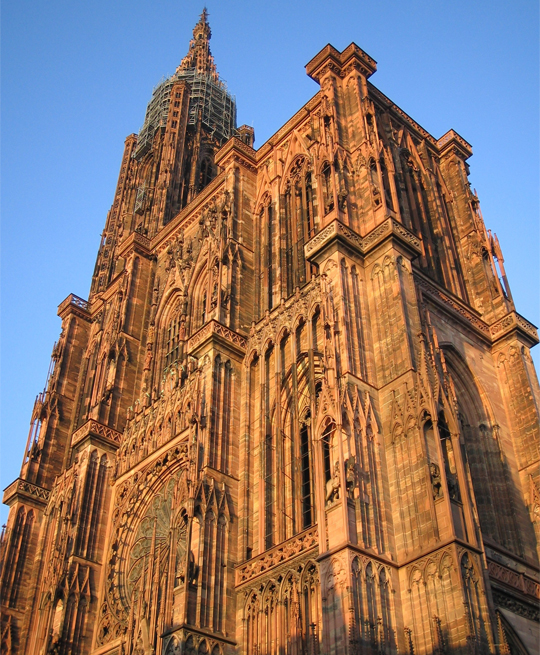
Alsace holds claims to some of the most beautiful cathedrals and churches in Western Europe in its old towns. In Strasbourg, the regal Strasbourg Cathedral is easily the most riveting sight. Primarily Gothic styled, it shows hints of Romanesque architecture in its intricately carved facade.
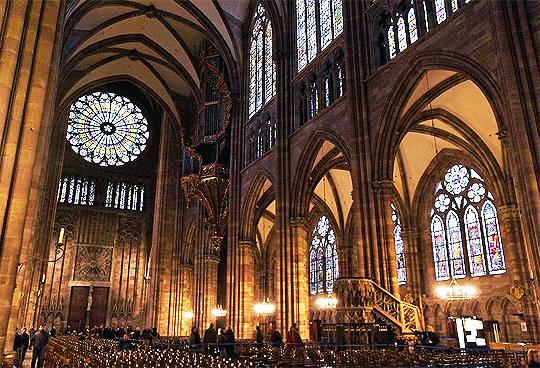
Unlike other cathedrals, the Strasbourg Cathedral only has one tower, and reflects an unusual pink hue, created from sandstone of the Vosges. The cathedral has an Astronomical Clock, with the highlight being the procession of the 18 inch high figures of Christ and the Apostles, which occurs every day at half past midday.
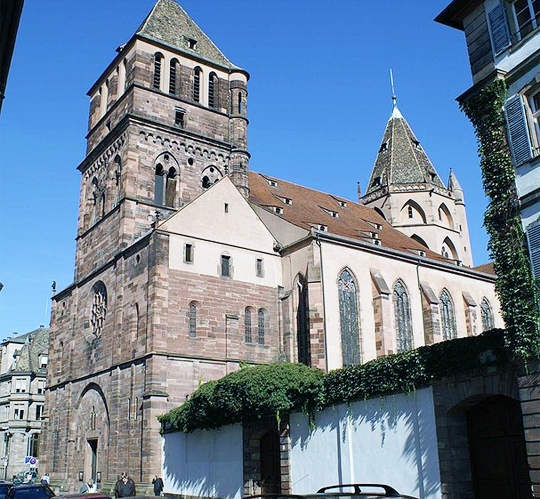
Besides the cathedral, Strasbourg is also home to several medieval churches that withstood the destruction of wars that plagued the city.
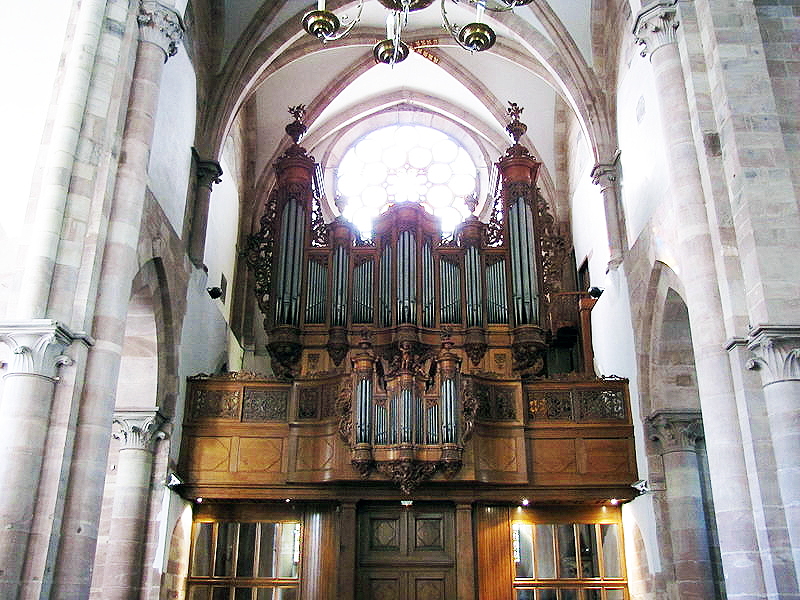
The church of St. Thomas appears modest from the outside, but within its walls lays the stunning 1741 Silbermann organ, played by Wolfgang Amadeus Mozart in 1778.
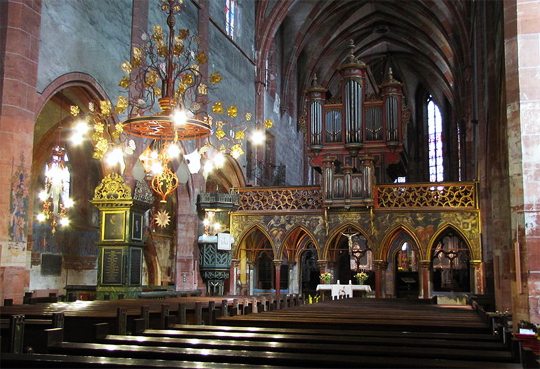
The Saint-Pierre-le-Jeune Protestant Church, the city’s most revered church building, houses a crypt dating back to the seventh century and its cloister dates back to the eleventh century.
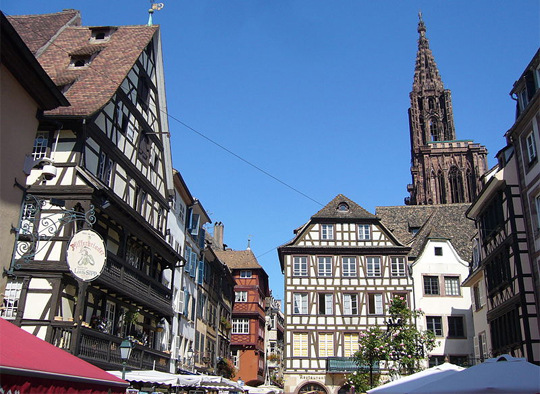
Strasbourg is known for its enchanting medieval streets. For the full impact of cobbled stone streets and old world structures, stroll along the Place de la Cathédrale, Place du Marché Gayot, Place Saint-Étienne, Place du Marché aux Cochons de Lait and Place Benjamin Zix.
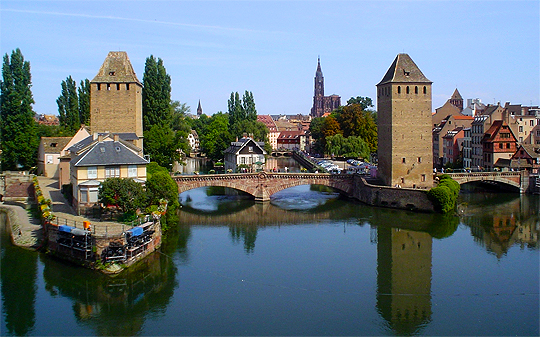
Another medieval highlight of Strasbourg is the Grande Ile, the historic centre of the city. It sits on the island on the III River, a waterway that parts the city. A UNESCO World Heritage site, the Grand Ile personifies the typical medieval city.

Colmar: the idyllic wine capital
Also a medieval city, Colmar’s blithe atmosphere creates a sense of serenity and embrace. While it’s light on mood, the city is heavy in heritage, being the birthplace of sculptor Bartholdi and famous illustrator Hansi.
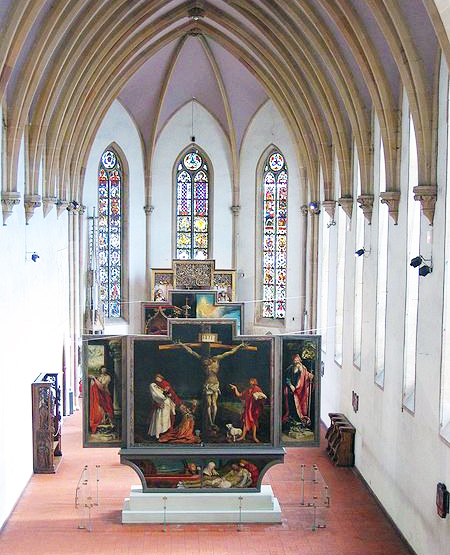
Labelled the “Capital of Alsatian Wine”, Colmar is a part of the Alsatian Vineyard route. A well preserved old town; it features numerous architectural landmarks, one of which is the Unterlinden Museum, with its Isenheim Altarpiece- the famous altarpiece by German artist Matthias Grünewald. Established in 1849, it features a large collection of local and international artworks and manufactured artefacts from pre-historical period to contemporary times.
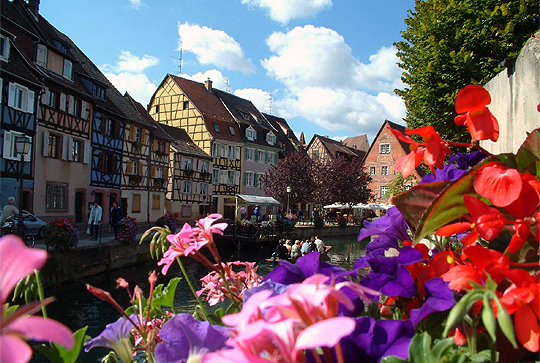
Thankfully, Colmar’s cityscape was spared from the French Revolution, and allows it to preserve its charm. The old town center is the pulse of Colmar. Surrounding the main square are old but well-preserved half-timbered houses. Look out for the Maison des Tetes (House of the Heads) – a Renaissance building decorated with faces, and the Pfister House, a marvellous old wooden house and one of the oldest houses in Colmar.
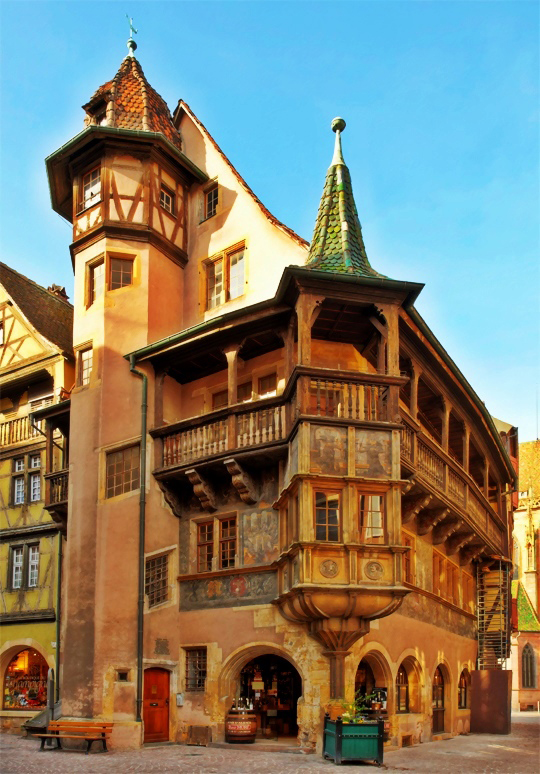
Take your time to comb the area and visit its unique shops. There’s a corner of the city lined with small canals reminiscent of Venice, giving it the label of Little Venice.
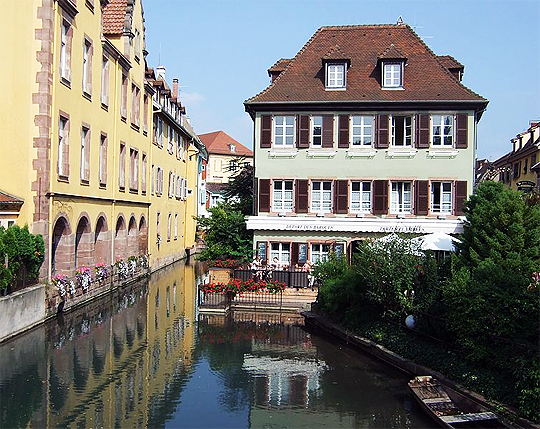
Tip: when marvelling at the architecture in Colmar, keep a look –out for dates painted on the side of the buildings. Some of them date back to the 1300s.
Did you know: Colmar’s cityscape served as part of the design of the Japanese animated film Howl’s Moving Castle.
Historic castles and their legacy
Castles bring to mind battles, legacy and history, and Alsace is home to Europe’s highest number of feudal castles. Famous ones include the Haut Koenigsbourg castle and the Hohlandsbourg castle.
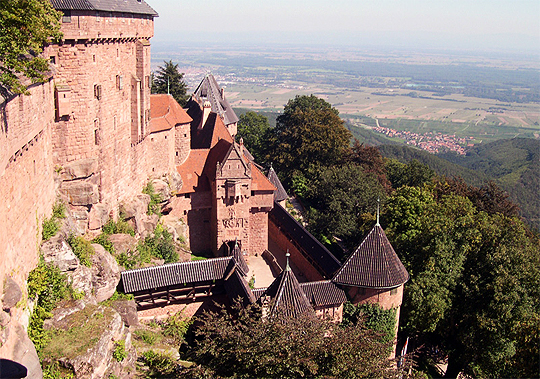
In Orschiwiller amongst the Vosges Mountains, the Château du Haut-Kœnigsbourg is perched on a high hill overlooking the Alsatian plain. Its strategic location made it a stronghold by those in power since the Middle Ages. Today, it’s one of the sights along the Alsatian Wine Route and listed as a national historic site.
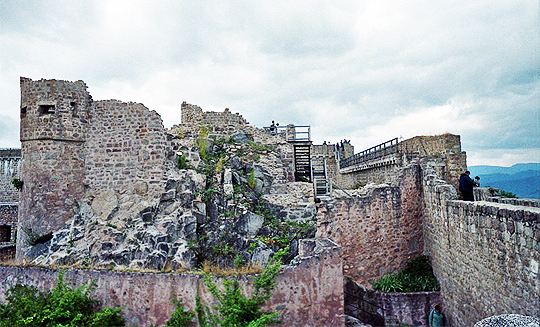
The Château de du Hohlandsbourg is a ruined castle in Wintzenheim, near Colmar. Dating back to the 1200s, the castle has a sweeping view of Colmar. It met an undignified end when the French troops blew it up in 1637 to prevent it from falling into Austrian’s hands. Today, it’s open to the public between Easter and early November.
Food in Alsace
Food is appreciated in Alsace, evidenced by the amount of Alsatian festivals and events revolving around food. Some Alsatian culinary specialties include Baeckeoffe (vegetable and meat stew), traditional Alsatian-style sauerkraut and fried carps. If you’re a food lover, you can join the gastronomic trails that will lead you to interesting culinary discoveries.
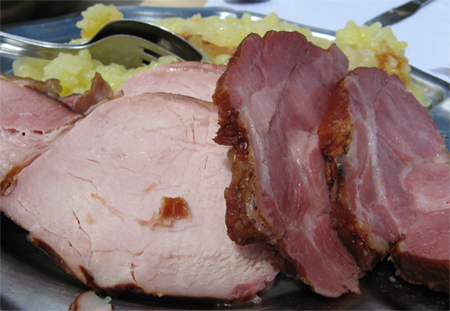
The Sauerkraut trail, part of the Alsatian Wine Route, is reknown. Along Strasbourg’s south and south-west, there are a string of restaurants offering affordable speciality sauerkraut dishes throughout the year. In recent years, sauerkraut cabbage farmers have adopted a quality process that results in a flavorsome taste. The trail will bring you to the best.
Getting Around Alsace
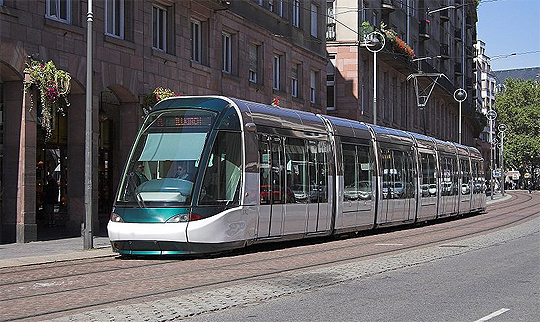
Travelling by car around Alsace is idyllic and ideal. The motorway will take you easily from the north to the south. This way, you can take in the picturesque views along the way and discover the hidden appeals of the region. If you are not confident driving in an unfamiliar place, you can always opt for public transport. Alsace offers a well-developed public transport system. Its railway system links together all the major towns and cities. All you need to do is take some time to figure out your route and you can be on your way in no time.
When to go?
Winters are harsh in Alsace, with blankets of snow derailing routes to vineyards and ruining sweeping landscape scenes. Summer brings sunshine that vineyards welcome for hospitality reasons.
For a place torn up by wars, Alsace stays surprisingly unharmed by its destruction. Instead it shows grace under fire and emerges fresh like a phoenix from ashes. The quaint respite is rich in culture and architecture, with historic cities, aged castles and rustic countryside sounds like the perfect escape.
